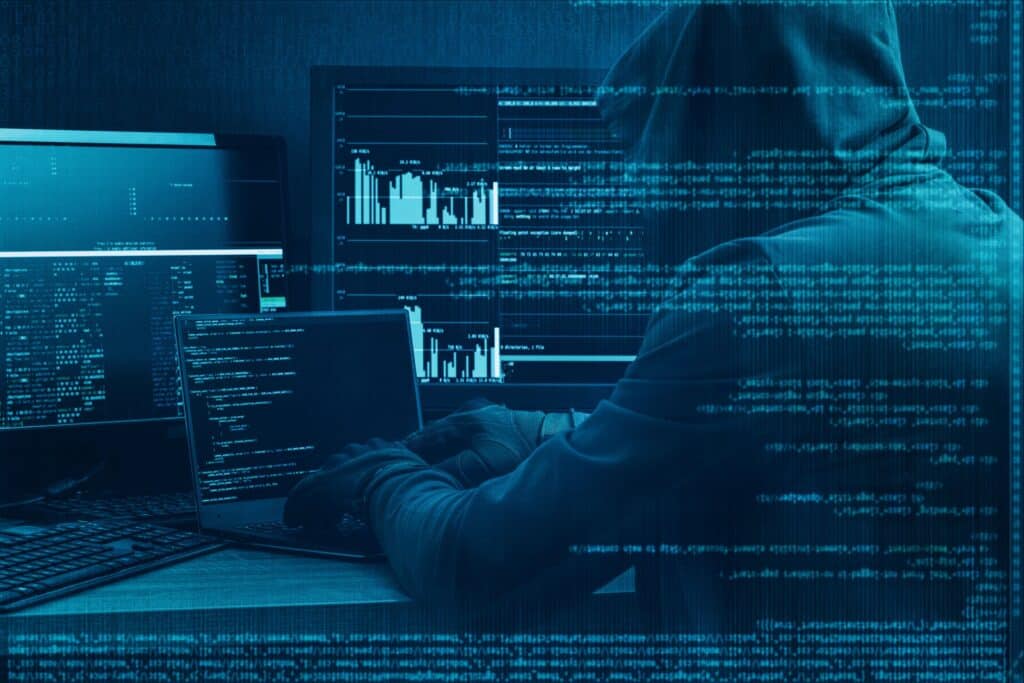Can Defamation Be Charged With Through LINE, X(Twitter) DMs, Emails, etc.? The Possibility of Identifying the Sender

The typical case of defamation and reputational damage on the internet is thought to be something like “a post that infringes on the right to honor (defamation) was made on an anonymous bulletin board”. It is possible to request the deletion of such posts or to identify the poster.
But what if you receive a malicious message not on a web-based platform like an anonymous bulletin board, but through email, LINE, X(Twitter) DM, etc.? Can the sender be identified as defamation?
To give you the conclusion first, this is generally difficult. There are two main reasons for this.
- First of all, sending that email (LINE, X(Twitter) DM, etc.) does not, in principle, constitute “defamation”
- Even if it exceptionally does constitute defamation, the problem of whether or not there is a right to request the disclosure of the sender of the message remains.
In addition to these issues, we will explain particular cases in which there is a possibility to become able to identify the perpetrator.
Is Sending Emails and the Likes “Illegal”?
“Publicity” is Necessary for Infringement of Honor Rights
In order for an infringement of honor rights (defamation) to occur, it is necessary to “publicly” indicate the facts.
The issue here is the term “publicly”. “Publicly” means “to an unspecified number of people”, and this “unspecified number” means “unspecified or numerous”. It is sufficient if at least one of “unspecified” or “numerous” is satisfied. “Unspecified” refers to, for example, passers-by in a busy street, while classmates in the same class are considered “specified”. “Numerous” does not have a clear line, but it is considered to be “numerous” if it is about several tens of people. Therefore, “all classmates in the same class” are “specified numerous”, and since it satisfies one of “unspecified or numerous”, it falls under “unspecified numerous”.
However, in the case of “sending an email (LINE, X(Twitter) DM, etc.) to someone”, it may only be an indication of facts to a “specified few”, and may not meet the condition of “unspecified numerous”.
What is the Theory of Propagation?
However, there is an exception to the above. Even if you only tell one person, if that person has the potential to “propagate” it to an unspecified number of people, it can be equated with an indication to an unspecified number of people. For example, consider a case where you tell a lie to a newspaper reporter. It is naturally expected that the newspaper reporter will write an article, and if it becomes a newspaper article, an unspecified number of people will read the “false rumor”. It would be a problem to say “no blame”. To deal with such cases, an “exception” called the “theory of propagation” is recognized as described above.
However, in many cases, people who receive emails, LINE, or X(Twitter) DMs do not necessarily spread them to others. The “theory of propagation” only applies in exceptional cases.
There is Also a Possibility of Infringement of Rights Other Than Honor Rights
In cases other than “honor rights”, it becomes a discussion unique to each right, but at least in cases where honor rights should be claimed, the problems above arise. And as a practical sense, the rights claimed in online reputation damage measures are honor rights in the majority of cases. If you can’t use those honor rights, it’s a struggle to claim a violation of rights.

Limitations of the Right to Request Disclosure of Sender Information
Even if an infringement of the right to honor or other rights is recognized, there is another issue.
The request for disclosure of sender information by a lawyer, namely the request to “disclose information such as the IP address and address of the person who committed defamation,” is based on the provisions of the Japanese Provider Liability Limitation Law. It may be a bit difficult to understand, but the right to identify the perpetrator at the time of reputational damage is not a right “naturally recognized by basic laws such as the Civil Code.” It is a right that was “established” for the first time by the Provider Liability Limitation Law.
And, the right to request disclosure of sender information under the Provider Liability Limitation Law is generally as follows:
“Specific Telecommunications Service Providers” should disclose the information they hold about the poster in the event of a rights infringement.
The problem is the “Specific Telecommunications Service Provider.” This is the legal term for “provider” at the time of the “Provider Liability Limitation Law.” And strictly speaking, it means “a person who mediates communication to an unspecified number of people.”
Is a Mail Server a “Specific Telecommunications Service Provider”?
In other words, in the case of a website, a site is “published to an unspecified number of people,” so the server administrator is “a person who mediates communication to an unspecified number of people” and falls under the “Specific Telecommunications Service Provider.” On the other hand, in the case of e-mail, it is communication to “a specific person.” Therefore, the mail server is “a person who mediates communication to a specific few” and does not fall under the “Specific Telecommunications Service Provider.”
Therefore, even if a defamatory email is sent, it is not possible to request the disclosure of sender information from the mail server.
Identifying the Perpetrator in Civil Cases is Difficult
This is essentially a problem of the “limits of the current legal system.” It is a problematic situation where “despite the infringement of rights and the commission of civilly illegal acts, there is no means to disclose information about who the perpetrator is to those who know who the perpetrator (such as the mail server administrator) is.” There is a possibility that the problem will be solved by future legal revisions, and it is believed that there is an urgent need for it, but under the current law, this problem has not been solved.
Identification of the Perpetrator is Possible in Criminal Cases
The above discussion is strictly at the civil level. If the police get involved in as a criminal case, the situation changes. The police can request information disclosure from the provider not under the “Provider Liability Limitation Law’s Right to Request Disclosure of Sender Information” (Japanese Provider Liability Limitation Law), but as an investigative authority in criminal cases. Therefore, regardless of whether the “email server corresponds to a specific telecommunications service provider”, they can disclose information such as IP addresses.
It is Necessary for the Sending of Emails to Constitute a “Crime”
However, the police will not take action unless it is a “criminal case”. As mentioned above, the sending of emails does not generally constitute “defamation”. And in online reputation damage control, privacy infringement is the second most claimed after the right to honor, but privacy infringement is not a crime. This is because there is no crime called “privacy infringement”.
Therefore, in the end,
- Infringement of the right to honor: In many cases, it does not apply if it is only sent to one person (or a specific few).
- Privacy infringement: It is not a crime in the first place.
As a result, you will have to consider the establishment of another “crime” such as business obstruction or intimidation.
Submission of a Damage Report or Accusation to the Police
If a crime such as business obstruction or intimidation is established, you can submit to the police,
- A damage report if it is a so-called non-prosecutable crime
- An accusation if it is a prosecutable crime
If you do so, the police will conduct an investigation, and there is a possibility that the perpetrator will be identified by the police as mentioned above.
However, as is often said, the police do not necessarily conduct an active investigation even if you make complains of damages. There could be several reasons for this, for example, the victim may not be able to explain to the police what kind of incident it is and what kind of investigation can lead to the identification of the perpetrator, and the police may not understand due to a lack of technical knowledge. In such cases, you may be able to prompt an investigation by the police by hiring an IT-savvy lawyer and submitting a damage report or accusation with the lawyer.
Summary: Illegal Emails and Methods of Identifying the Perpetrator
From the above, the communication and identification of the perpetrator of malicious and illegal activities such as emails, LINE, and X(Twitter) DMs can be broadly categorized as follows:
Defamatory Content Aimed at an Indefinite Number of People
Since “defamation (infringement of honor)” requires “publicity”, it is not illegal either civilly or criminally, and it is impossible to identify the perpetrator in any sense.
Invasion of Privacy, etc.
It is illegal in civil law, and if the perpetrator is identified, it can lead to issues such as claims for damages. However, since it is one-to-one communication, there is no way to identify the perpetrator in civil law. This is primarily due to the inadequacy of the legal system.
Invasion of privacy is not a “crime”, and there is no expectation that the police will identify the perpetrator.
Business Interference, Threats, etc.
It is a crime, and if the police investigate, there is a possibility that the perpetrator can be identified.
Although it is illegal in civil law, as stated above, there is no way to identify the perpetrator in civil code as long as it is one-to-one communication.
Potential for Sender Identification through Bar Association Inquiries
However, as an exception to the aforementioned “summary”, and as a sort of “last resort” at the civil level, there is the option to seek the identification of the perpetrator, such as the disclosure of IP addresses, not through the so-called “right to request disclosure of sender information”, but through the so-called “Bar Association Inquiry (Article 23 Inquiry)”.
Logically, a Bar Association Inquiry can be used in cases where:
- The perpetrator can be identified and a claim for damages is possible
- The identity of the perpetrator is unknown
Therefore, it can be used in situations such as:
- Wanting to claim damages due to being victimized by a threatening email, but
- Not knowing who sent the email
However, whether or not the server of the email or other such services will disclose the information in response to this inquiry is another separate issue.
Summary
Defamation associated with sending LINE, X(Twitter) DMs, or emails is generally not recognized in Japanese law. Furthermore, it is currently difficult to obtain permission to disclose sender information.
However, in places such as the reply section of X(Twitter) or on a mailing list, where there is a high possibility of having seen by a ‘large number of unspecified individuals’, there is ample room for defamation to be charged with.
Our firm possesses extensive expertise in defamation lawsuits in the IT field. Moreover, if IT-related defamation is left unattended, it can often expand to an unignorable extent. It is necessary to take action promptly. Please feel free to consult us if you have any concerns.
Category: Internet





















